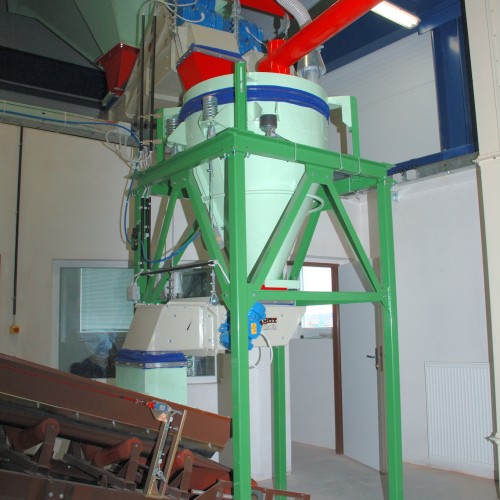Dosing scales for bulk material

The scales have a reservoir that contains the material or liquid to be weighed. It is usually placed on one or more strain gauges, which are built into a rigid frame. The scale magazine is usually steel, in some cases it is made of stainless steel, plastic, depending on the application. The weighing containers can be lined with abrasion-resistant material, provided with a special coating, etc. The material into the container and the emptying of the container are ensured by suitable feeders, see below.
Technical parameters in general:
- Weighing capacity usually from 1kg to 5000kg
- static accuracy by weight + - 1 division when dividing approx. 0.1-0.02%, ie 1000-5000 divisions. out of range
- dynamic accuracy according to the choice of the feeder is 2-5 divisions.
- sensitivity according to the division of the evaluation unit is usually up to 50,000 pieces.
The output electrical signal from the loadcells, which is proportional to the load, is evaluated by a special evaluation amplifier.
Kinds of hopper scales:
- incremental (multi-component) container dosing
- declining storage tanks
- liquid scales
- special scales
* microcomponent scales
* volumetric scales. (for very light materials,
instead of strain gauges there is a level sensor)
* etc.